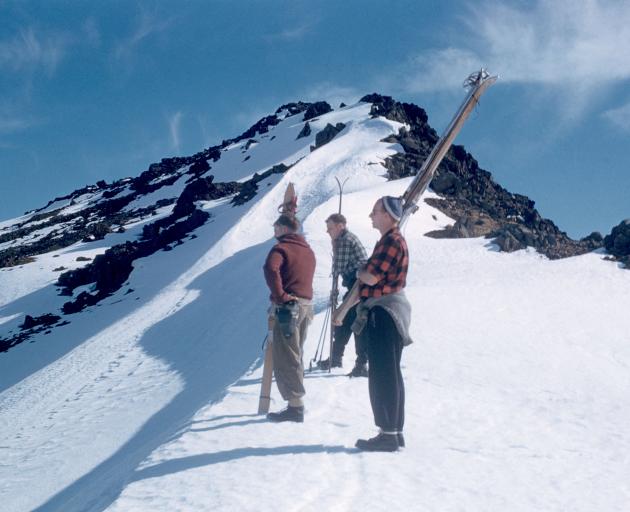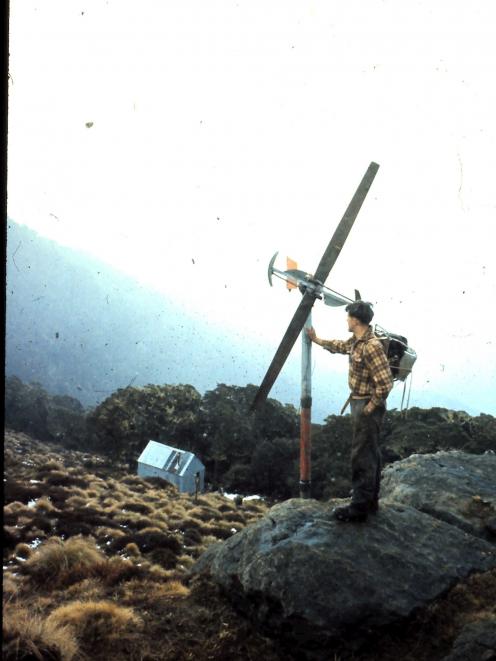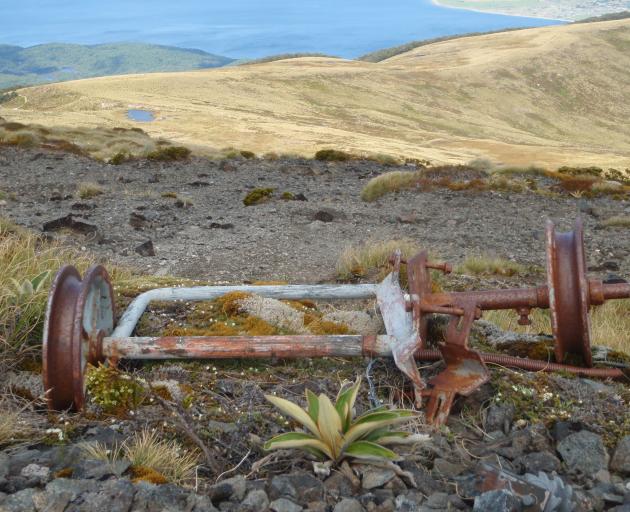

According to his son, Te Anau resident Barry Campbell, Wilson was always an enthusiastic promoter of tourism in New Zealand, and Fiordland in particular. Although born in South Otago and living a large chunk of his life in Gore, including four years as mayor, he became passionate about Fiordland and spent his later years in Te Anau.
Always on a lookout for ideas to bring more tourists to Fiordland, he became interested in the possibility of skiing on Mt Luxmore. In winter 1958, Wilson and his then 17-year-old son Barry trialled the skiing conditions on the mountain. Using a large tent set up as their base in the forest above the Bluffs, they skied most weekends that season.
The next year, Wilson was granted permission to build a hut on the mountain. This was constructed in his garage in Gore, disassembled, packed into 100kg bundles and sent to Te Anau to be air-dropped from a Cessna aircraft on the mountain. Unfortunately, things did not go according to plan and only half of the bundles arrived intact at the right place. Two loads were dropped 3km away from the intended hut site, and one rolled down the mountain, braking into splinters.

Skiing in those early days could hardly be classified as a leisure activity. For Barry, who at that time was living in Invercargill, it meant driving to Te Anau after work on Friday, taking a boat trip across the lake to Brod Bay and walking for two to three hours up to the hut. The weekend would be spent skiing on the mountain. Naturally, skiing would take only a fraction of the time it took to climb the mountain, skis over your shoulder.
Barry's younger brother, Vaughan, remembers walking up the mountain in the dark with his father, brother and sometimes a friend or two, using Tilley lanterns for light.
"Mum made my big, baggy ski pants out of woollen fabric that snow used to stick to, and dad made my first wooden skis. They didn't have metal edges, like modern skis do, which made it really difficult to turn," Vaughan remembers.

As more people became interested in the skifield, it became apparent that a ski tow was necessary if this was to become a commercial venture. Barry set out to build one using his engineering skills and some of the "useful junk" from his shed.
With the help of friends and family carrying heavy loads up the mountain, the tow was built on the ridge overlooking the south basin, powered by an old James motorcycle engine coupled with a small gearbox from a Valentine tank. This, Barry admits, proved to be an "absolute disaster" due to design shortcomings and insufficient snow coverage that year. After another year they dismantled it.

"The Mt Cook Company gave us the surplus learner's tow from Coronet Peak, which I reconditioned before it was heli-lifted to Mt Luxmore by Bill Black in 1970. This was to enable us to evaluate the field to see if it would be suitable for development," Barry recalled.
At 1472m, Mt Luxmore is just 177m lower than Coronet Peak, New Zealand's first commercial skifield, which opened in 1947 with a single rope tow. The gentle slopes to the south and east of Mt Luxmore would make good ski runs.
The tow worked well, but during the week, while not in use, the rope would get buried in the snow, sometimes 2m deep, and it would take a day to dig it out. Despite that, the Campbells believed the ski field idea was commercially viable as long as there was a good access to the mountain. The main obstacle was Mt Luxmore's location in Fiordland National Park.

In 1974, 16 years after they first trialled skiing on Mt Luxmore, Wilson Campbell and his sons decided to abandon the idea as just too difficult. They disassembled the tow and returned the parts to Coronet Peak.
In the early 1980s, Tony Gibson and Jeff Ludemann tried to run a heli-skiing operation using a semi-portable ski lift, but this idea didn't fly either and was abandoned after only one season.
Today, the snow-covered peaks surrounding Lake Te Anau remain inaccessible to skiers and most people walking up Mt Luxmore have no idea that 60 years ago a man had a vision of turning Te Anau into a ski resort.
It takes me three hours to walk to the Luxmore Hut, then an hour and a-half to get to the snow. I climb on top of a knoll and put my skis on slowly, cherishing the moment.
There are no other people around, no ski tracks on the snow. I point the tips of my skis down and slide off. The run downhill takes less than five minutes, but I have no energy left to climb up again for another run, although it's the views and not the skiing that takes my breath away. I leave with conflicting desires to have a skifield at my doorstep and to protect this amazing place.
Alina Suchanski is a Te Anau-based writer.











